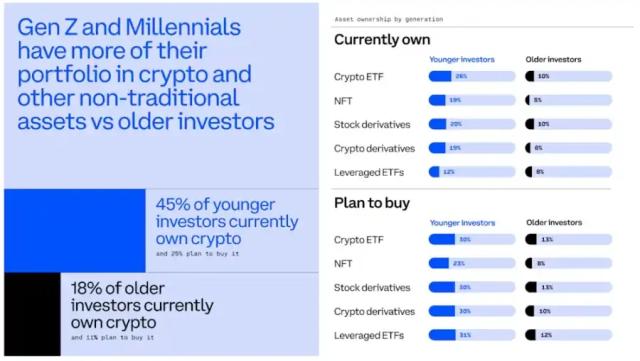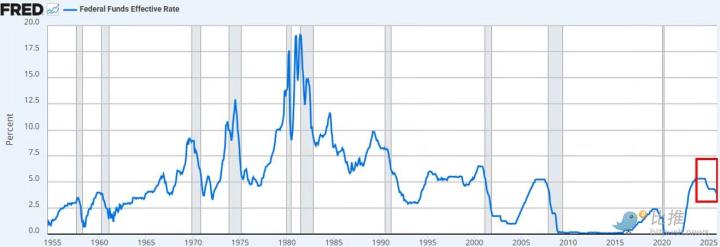The Importance and Questions Surrounding USDT
With its extensive circulation in global markets and substantial asset base, USDT has become the most significant liquidity tool in offshore markets. However, questions about Tether persist: Why is Tether referred to as the "de facto central bank" of our industry? Why is the U.S. regulatory stance towards it so ambiguous—neither fully suppressing nor clearly supporting it? What does its existence mean for the U.S. financial market? In this complex landscape, where are Tether's breakthroughs? This article aims to help you think about the significance of stablecoins from a broader perspective, which is essential for understanding breakthroughs in this field.
What Makes Tether a Good Business?
Recent third-quarter data released by Tether showcases its impressive profitability. As of the third quarter, its total assets reached $125 billion, with approximately $102 billion invested in U.S. Treasury securities. The net profit for the third quarter was $2 billion, bringing the total profit for the year to $7.7 billion. In contrast, BlackRock reported a third-quarter profit of $1.6 billion, and Visa reported $4.9 billion, yet Tether employs less than 1% of their workforce, achieving over a hundred times their per-employee productivity.
In reality, Tether's success did not come without challenges; it was born out of market demand. At the time, nearly all exchanges were trading pairs with Bitcoin, which was highly volatile and complicated the settlement process. Bitfinex identified this issue and introduced USDT as a unit of account, marking the first step in its development. In 2019, Sun recognized the need for cross-chain stablecoin transfers between exchanges. The cost and speed of transferring ETH to USDT were problematic, while transfers on Tron were both cheap and fast. Consequently, he began to subsidize the market on a large scale, spending hundreds of millions (primarily from Tron node revenues) to promote TRC20-USDT transactions. Users could earn between 16% to 30% when depositing and withdrawing USDT, further solidifying its position as a trading medium. Subsequently, the large-scale application of USDT in the off-chain world unfolded, serving as a store of value in countries facing hyperinflation and as a medium of exchange in various gray areas, ultimately evolving into a "shadow dollar."
Currently, over 80% of Tether's assets are invested in U.S. Treasury securities, giving it characteristics akin to a government-type money market fund, with high security and ample liquidity. As a store of value, its safety exceeds that of traditional deposits, which may face risks associated with bank assets, such as the impact of the SVB collapse on USDC, while Treasury securities are among the lowest-risk products in financial markets.
Moreover, Tether surpasses money market funds because they cannot perform monetary settlements; they only sell products and cannot serve as actual monetary circulation tools. This is one reason why Tether achieves such high per-employee productivity. As a trading medium, USDT significantly reduces friction in currency circulation compared to existing cross-border settlement or payment channels. As a "shadow dollar," USDT's circulation across various global channels and exchange platforms continues to expand its influence.
This is the allure of the currency business: Tether integrates payment, settlement, and fund management, effectively becoming the Federal Reserve of our industry. Such a scenario would have been unimaginable before the advent of cryptocurrencies. Its network effects strengthen with increased liquidity, which cannot simply be disrupted by distributing 5% returns to users.
This also explains why PayPal has launched a stablecoin. As its business expands, PayPal has achieved fund accumulation and payment settlement, making stablecoins the optimal vehicle for all this. Conversely, might U.S. banks and money market funds envy this business model?
From Too Big to Fail to Too Deep to Fail
The Simplicity of Targeting Tether
If the United States wanted to target Tether, it would be quite simple, as the custody of U.S. Treasury securities is highly centralized. Since 2021, Tether has been under investigation by the Department of Justice, and at the end of 2022, the case was handed over to Prosecutor Darmian William of the Southern District, who has handled nearly all high-profile cryptocurrency crime cases, including that of SBF. Therefore, the issue is not whether it can be done, but whether there is a willingness to do so. So why the reluctance?
First, there is the liquidity risk associated with the U.S. Treasury market. With 80% of Tether's assets in U.S. Treasury securities, any extreme regulatory measures that force Tether to sell these securities on a large scale could trigger turmoil, or even a collapse, in the Treasury market. This is the reason behind the notion of "too big to fail."
More importantly, USDT's global expansion as a "shadow dollar" plays a crucial role. In regions experiencing severe inflation, USDT is viewed as a store of value; in areas facing financial sanctions and capital controls, it has become a currency for underground transactions; and it is also present in contexts involving terrorism, drug trafficking, fraud, and money laundering. As USDT is increasingly used across various countries and scenarios, its anti-fragility will significantly strengthen, which embodies the idea of "too deep to fail."
The Federal Reserve clearly welcomes this development. On the surface, the Fed's mission is to maintain price stability and achieve full employment, but at a deeper level, its goal is to reinforce the supremacy of the dollar and control global capital flows. It is the widespread circulation of USDT and USDC that aids in expanding the dollar's offshore liquidity. While USDC serves as a regulated tool for dollar entry and exit, USDT penetrates the global market through its extensive channels. The underground banking system and gray remittance services associated with USDT facilitate the circulation and cross-border payment of dollars. This helps the U.S. maintain a dominant role in the global financial order, further consolidating the dollar's hegemony.
Sources of Resistance to Tether
Despite Tether's contributions to the continuation of U.S. financial hegemony, a struggle between it and U.S. regulatory agencies persists. As Hayes noted, "Tether could be shut down by the U.S. banking system overnight, even if it operates completely above board."
First, Tether's structure does not support the Fed's monetary policy. As a fully reserved stablecoin, Tether's liquidity does not change with adjustments to the Fed's monetary policy, preventing it from participating in quantitative easing or monetary tightening like commercial banks can. While this independence enhances its credibility, it also makes it difficult for the Fed to achieve its monetary policy goals through Tether.
Second, the Treasury remains vigilant regarding the potential for Tether to cause upheaval in the Treasury market. If Tether were to collapse suddenly, it could lead to a massive sell-off of Treasury securities, putting significant pressure on the market. This issue was widely discussed at the Treasury's borrowing advisory committee meeting on October 29, where the possibility of tokenizing Treasury securities was considered as a means to mitigate USDT's impact on the Treasury market.
Finally, and most importantly, Tether effectively squeezes the survival space for banks and money market funds. The high liquidity and returns of stablecoins attract an increasing number of users, posing a severe challenge to the appeal of bank deposits and the competitiveness of money market funds. Given that Tether's business model is extremely profitable, one might wonder why banks and money market funds are not participating in this lucrative market. The introduction of the Lummis-Gillibrand stablecoin bill in April this year is a strong indication of efforts to encourage more banks and trust institutions to engage in the stablecoin market.
Tether's development journey is a dramatic saga of struggle, burdened by the original sin of regulatory arbitrage, which paradoxically provided immense opportunities for growth. Now, it is finally positioned to challenge old powers, and while its future direction remains uncertain, any groundbreaking innovation represents a redistribution of past power and interests.
The Potential for a Supranational Currency System
To transcend the dollar system, Tether's future lies not only in maintaining its role in global payments and liquidity but also in how it constructs a genuine supranational currency system. I believe the key lies in its connection with Bitcoin. In 2023, Tether took a significant step by investing 15% of its profits into Bitcoin. This move not only diversifies its asset reserves but also positions Bitcoin as an essential component supporting its stablecoin ecosystem.
As Tether's payment network expands and Bitcoin deepens its status as a supranational currency in global markets, we may witness the emergence of a completely new financial order.
Revolutions often begin at the margins, sprouting in the gaps left by the decline of old beliefs. The reverence for Rome has turned the dominance of Roman civilization into a "self-fulfilling prophecy." While the birth of new gods may be attributed to many fortuitous opportunities, the twilight of the old gods is already predetermined.







